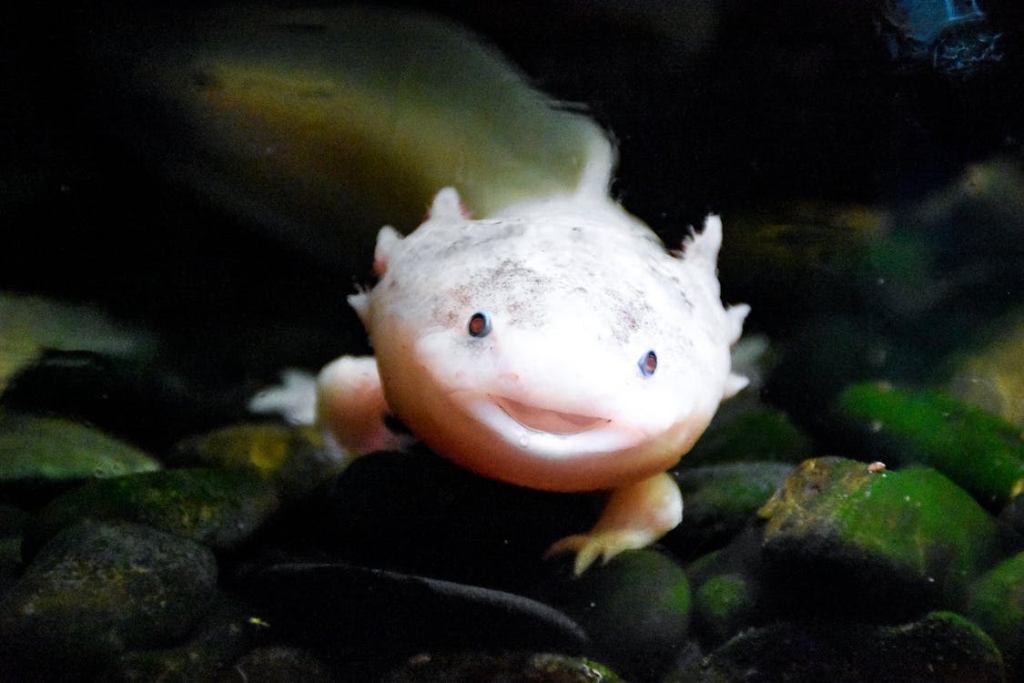Do Fish Eat Axolotls? A Guide to Safe Tankmates and Proper Care
If you own an axolotl or are thinking about getting one, you might wonder about the safety of your pet in a tank with fish. It’s a common question, and while axolotls are pretty chill, you need to make sure they’re not at risk of being eaten or harmed by other creatures.
The idea of fish eating axolotls might sound strange, but there are some things you should know.
Whether you’re a first-time axolotl owner or an experienced enthusiast, understanding how fish and axolotls interact can help you create the safest, most peaceful environment for your pet.
Can Fish Eat Axolotls?

First things first: most fish won’t actively go after an axolotl to eat it, but that doesn’t mean they won’t cause harm in other ways. Axolotls are pretty hardy creatures, but they’re still delicate, especially when it comes to smaller fish in the tank.
Axolotls can live between 10 to 15 years in the wild, showcasing their longevity among amphibians.
Fish are often attracted to movement and can nip at an axolotl’s gills or limbs, which can be harmful. You need to think about the types of fish you put in the tank with your axolotl and their behavior before introducing them.
Types of Fish That Could Pose a Threat
Some fish are more aggressive or curious than others, which could lead to problems for your axolotl. Fish with a tendency to nip or pick at other creatures might not be the best tankmates. For example:
- Betta Fish: These little guys are known for their territorial nature. They can get aggressive with other fish or animals, including axolotls.
- Goldfish: While not typically aggressive, goldfish can nibble on an axolotl’s gills or sensitive skin, especially if the axolotl is smaller.
- Cichlids: Some species of cichlids are known for being predatory, and they might view an axolotl as a potential snack, especially when it’s young.
Fish That Are Safe with Axolotls
On the flip side, there are certain types of fish that are much safer to keep with your axolotl. Peaceful species that aren’t likely to nip at your axolotl’s gills or legs include:
- Guppies: Small, peaceful, and non-aggressive, guppies are great companions for axolotls.
- Neon Tetras: These little fish are not only safe for your axolotl but also add a pop of color to the tank.
- Corydoras Catfish: Known for being bottom-dwellers, they won’t bother your axolotl, and they also help keep the tank clean.
It’s important to remember that no matter the species, you should monitor how your fish behave in the tank. Fish can sometimes develop bad habits, like nipping at your axolotl, so always keep an eye out for any signs of stress.
Why Fish Might Harm Axolotls
Even though fish aren’t likely to eat your axolotl outright, they could still pose risks in other ways. Fish have sharp teeth and can be quite curious. The main risks come from:
- Nipping at gills: Axolotls have external gills, which are soft and vulnerable. Fish might mistake them for something to nibble on.
- Stress: Having fish in the tank could make your axolotl feel stressed or threatened. Stress weakens the immune system and can cause health problems.
- Aggression: Some fish are naturally aggressive. Even if they aren’t eating your axolotl, their behavior can still cause physical harm or stress.
As a responsible axolotl owner, it’s your job to keep track of the tank dynamics to ensure your pet’s safety.
Tank Setup for Axolotls and Fish
If you decide to keep fish and axolotls together, you’ll need to set up your tank in a way that minimizes risks. Here are a few tips:
Adequate Space for Both
Fish and axolotls need plenty of room to swim around. A tank that’s too small could lead to territorial fights or stress. Aim for at least a 20-gallon tank for one axolotl, and make sure there’s enough space for the fish as well.
In 2012, close to 10,000 axolotls were introduced in efforts to boost their population in the wild.
Hiding Spots for Your Axolotl
Axolotls are pretty shy creatures and love to hide. Provide plenty of hiding spots, like caves or plants, where they can retreat if they feel threatened. This will help them avoid stress from curious or aggressive fish.
Water Temperature
Axolotls prefer cool water temperatures (around 60-68°F), while many tropical fish like it warmer. To prevent stressing your axolotl, you’ll need to choose fish that can live in similar temperatures or adjust the water temperature to a neutral range that both species can tolerate.
Low-Flow Water Filter
Axolotls prefer calm waters, so choose a low-flow filter that won’t create strong currents. A fast-moving current can make it harder for your axolotl to swim and can lead to stress.
How to Prevent Fish from Attacking Your Axolotl
Even if you choose peaceful fish, there are still ways you can reduce the chances of conflict between your axolotl and the fish. Here are a few tips:
Monitor Feeding Times
Fish and axolotls can both be food-driven, so it’s essential to establish a feeding routine. Feed your axolotl separately from the fish so it won’t feel threatened during meal times. This also prevents fish from scavenging the axolotl’s food, which can stress it out.
Keep Fish Size Appropriate
When selecting fish, think about their size. Avoid fish that are too big or too small. Large fish could view the axolotl as prey, and small fish might be at risk of being eaten or getting nipped.
Watch for Signs of Stress
Be aware of your axolotl’s behavior. If you see signs of stress, like rapid gill movement or staying hidden for long periods, it could mean that your fish are causing problems. In such cases, you might need to remove the fish or find a more suitable tankmate.
A 2019 assessment indicated that only between 50 and 1,000 axolotls are left in their natural habitat.
Can Axolotls Eat Fish?
While the question is whether fish can eat axolotls, it’s also worth noting that axolotls are carnivores and could, in theory, eat small fish. If the fish are small enough or not quick enough, your axolotl might go after them. However, it’s not common for axolotls to actively hunt fish.
Their diet mostly consists of worms, insects, and other small invertebrates, but in a confined space, they might go for anything that moves. It’s another reason to carefully select fish that are large enough to not be seen as food but small enough to not disturb the axolotl.
Alternatives to Keeping Fish with Axolotls
If you’re hesitant to keep fish with your axolotl due to concerns about safety, there are alternatives. Some people choose to create a tank that’s solely for axolotls. You can fill it with:
- Live plants: These help keep the tank clean and provide hiding spots.
- Aquatic invertebrates: Snails, shrimp, or other invertebrates can live alongside your axolotl and won’t pose a risk to it.
- Axolotl-only tank: Sometimes the best option is simply to keep your axolotl in a tank with no fish, allowing them to thrive without competition or threats.
These alternatives can be safer for your axolotl and still create a vibrant, interesting tank.
Conclusion: Safe Fish and Axolotls
If you’re looking to add fish to your axolotl tank, it’s totally doable, but it requires some careful planning. Choosing the right fish and setting up the tank with plenty of space, hiding spots, and a peaceful environment is key.
Always prioritize the well-being of your axolotl, keeping an eye on its behavior and any signs of stress. By selecting the right fish and following a few simple guidelines, you can create a safe, enjoyable environment for both your axolotl and your fish.
References
Keeping and Caring for Axolotls as Pets
What is an Axolotl and Why Are They Endangered?
Axolotl Fact Sheet | Blog | Nature | PBS
Disclaimer
This content on Bagrica is for informational purposes only. Consult a professional for pet care or farming advice. Bagrica is not liable for any actions taken based on this information.







No Comment! Be the first one.